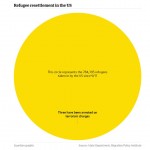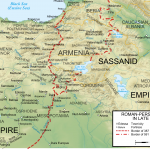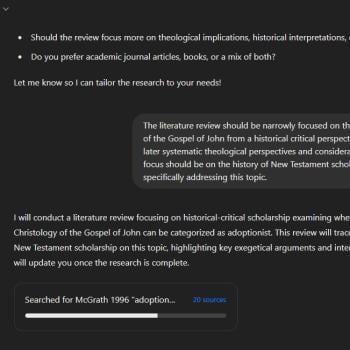Urban C. von Wahlde, Gnosticism, Docetism, and the Judaisms of the First Century: The Search for the Wider Context of the Johannine Literature and Why It Matters. LNTS 512. London: Bloomsbury/T&T Clark, 2015.
What follows are thoughts by me prepared for a book review session at the Midwest Regional Society of Biblical Literature conference:
In this volume, Urban von Wahlde explores a number of key details that relate to and emerge from his long-term project of redaction critical analysis of the Johannine literature, and in particular his three-volume commentary on the Gospel and letters of John. That latter work makes in detail a case which has to be taken for granted rather than argued for in the much smaller volume under discussion today. Yet in another sense, that is not exactly true, because arguments about the composition history of a piece of literature (absent copies of variant forms of the work that provide clear evidence of that history), require the interpreter to make a two-pronged case for their reconstruction. On the one hand, there is a need for the lengthy and fine-toothed study that explains how each passage (and sometimes each individual verse) fits into the hypothetical layer to which it is assigned. On the other hand, studies like those in the volume we are discussing today are also essential to the case for the reconstruction. As von Wahlde zooms out to survey the bigger picture, or focuses in on one thematic thread that must be traced through multiple passages, his detailed exegetical work in the commentary is put to the test. And so it is not as though this volume simply depends upon and requires knowledge of the commentary – which would put at a serious disadvantage anyone who had not worked through those three volumes in their entirety. In equal measure, the commentary depends upon this volume, since what might seem to make good sense of one specific passage may seem implausible when considered in relation to the Gospel, or the history of ancient Judaism and early Christianity, as a whole.
Let me begin by offering some notes of appreciation. Scholarship in our time has shifted in the direction of a preference for simply setting aside tradition-, source-, and redaction-historical matters, in favor of focusing only on the final form of a text. Into that challenging setting, von Wahlde makes a strong and persuasive case for the need for those older kinds of explanations if we are to do justice to the Fourth Gospel. Even if one may not be persuaded by all the details of his reconstruction, the point about the value of such reconstructions stands. We cannot simply assume the unity or disunity of a work as interpreters. Instead, we must reflect on how we might determine whether material that seems to be in tension is evidence of the work of different authors, or of the inconsistency of a single author. We must also ask, even if we believe that we have correctly identified separate strands and layers, how we decide how to arrange and order them. These questions should not be sidestepped or set aside in favor of the presumption of a work’s unity.
Also to be greatly appreciated is the level of attention to detail that von Wahlde offers. Multi-volume commentaries have become the exception rather than the rule in our time, and the change of approach mentioned above (favoring the presumption of literary unity) probably correlates with this tendency. The question of whether one is persuaded by the reconstruction is once again a secondary one. If a plausible reconstruction of the formation of the Johannine tradition is ever to be offered, it will have to be at this level of detail in a multi-volume commentary, and with accompanying monographs of the sort we are reviewing today. It may be that someone may do a superior job to von Wahlde of reconstructing the tradition history of the Johannine literature. But they will have to do so in conversation with von Wahlde’s effort, and at a comparable level of detail.
The major questions and alternatives that I am most eager to focus on in my review lie precisely at the intersection of the classic synchronic approach of tracing Christological and literary development, and the insistence of some scholars in our time that we find an “early high Christology” consistently across our early sources. On the one hand, my sympathies lie strongly with von Wahlde, that there is significant development to be traced in early Christology, and that the Gospel of John provides crucial evidence of that development. On the other hand, I am increasingly persuaded that the extent of the development is somewhat less and different than many have tended to think, not because there is a uniform early high Christology of the sort posited by those who identify with that club (and yes, there really is an Early High Christology Club, and apparently they even have mugs with their logo on it),[1] but on the contrary, because John in fact stands closer to the Synoptics in certain key regards, despite its dramatic differences.
Let us, however, return to those possibilities later, after focusing in on the reconstruction of the context and influences on the Gospel of John. Here too I have great appreciation for von Wahlde’s work, and find his arguments persuasive. First, von Wahlde argues against the view that Gnosticism or Docetism – or opposition to those views – form the background to the Gospel of John. Methodically working through key characteristics of Gnosticism, von Wahlde rightly finds the similarities with John to be superficial, while the differences run deeper. Having spent much time lately working on Mandaean literature, I have become persuaded that it is time to revisit and reexamine its relationship to early Christianity and the New Testament – but it is not the background of the Gospel of John. There are some problematic aspects to von Wahlde’s case in a couple of places – such as when he characterizes the Mandaean sources as “recently discovered” in relation to Rudolf Bultmann’s time (p.27), or when he suggests that Gnosticism in general (as opposed to say Manichaeism more specifically) was characterized by an absolute dualism of two eternal opposing forces of good and evil. In many Gnostic sources, it was by a distancing and eventually a departure from the supreme goodness of the ultimate divine power that evil came about. This Gnostic view involving emanations is different from that of apocalyptic in significant ways. Nevertheless, it remains closer to that than to the absolute dualism of say Zoroastrianism, and so probably deserves to share the label “qualified dualism” togethe with apocalyptic (pp.131-132). Be that as it may, the view of God as creator, and many other details expressed in John, are simply not Gnostic. On the other hand, what von Wahlde rightly emphasizes in relation to Docetism, may equally be said about Gnosticism: the fact that John’s Gospel is not Docetic or Gnostic, and is incompatible with those viewpoints, does not mean that it is anti-Docetic or anti-Gnostic (p.98).
Although I found von Wahlde persuasive in both these areas, I do nonetheless feel that one argument he makes is problematic when considered within the context of his own work. On p.65, von Wahlde suggests that the best explanation must do justice to the full range of texts and other evidence. Yet surely his own approach provides a potential loophole for those who claim to find anti-Docetic arguments in the Gospel? Could scholars like Udo Schnelle not simply attribute evidence which seems incompatible with an anti-Docetic emphasis to some other layer in the tradition history? This point does not undermine von Wahlde’s multi-pronged and multi-faceted argument. It nevertheless seemed worth highlighting this point because of the broader methodological issues related to it: on the one hand, the issue of consistency in the application of the tradition-historical approach; and on the other hand, whether the potential of a reconstruction to eliminate all inconsistencies is in fact a strength or a flaw of the approach, given the fact that we all know as scholars that we do not always achieve consistency even when we eagerly strive for it.
Moving on from Docetism and Gnosticism to the third major section of the book, Von Wahlde sees the appropriate backgrounds to the Gospel of John in the diversity of Judaism that existed in the first century, and I agree strongly. Yet I find myself uncomfortable with his categories of “canonical,” “apocalyptic,” and “Hellenistic” Judaism. As Martin Hengel cogently argued (and subsequent studies have consistently confirmed), there was no Judaism in the Greco-Roman world that was “non-Hellenistic.” This should not lead us to neglect the genuine diversity in Judaism in this time. The point is rather that it needs to be characterized and labeled differently. Just as it would be problematic to speak in the present day context about “American” Christianity over against Episcopal or Mennonite, so too the views characterized as apocalyptic and classic or canonical were also Hellenistic, even in the moments when they may have consciously rejected or resisted certain aspects of the broader cultural trends in the Mediterranean world. And the other categories likewise overlap – as highlighted by the presence of apocalyptic in the canon, and of the canonical texts in apocalyptic groups. I will not here suggest alternative categories, except to say that even other terms that come to mind, such as “Pharisaic” or “Essene” or “Enochic,” probably equally represent overlapping circles. Also, then as now, people could be influenced by, or find their way to, a wide array of ideas, without identifying with the whole system of thought of which those ideas were characteristic.
In relation to the Gospel of John, it is not at all implausible to posit that the influence of different forms of Judaism over the decades may have played a role in shaping the developing tradition and literature of this community. However, I am less persuaded that it makes sense to view apocalypticism as a latecomer to their school of thought. This seems to me to face the same hurdles that the misuse of the criterion of double dissimilarity faces in the work of the Jesus Seminar. Many feel that it makes little historical sense to have an apocalyptic John the Baptist followed by a non-apocalyptic Jesus who gives rise to an apocalyptic church. What then are we to make of an apocalyptic historical Jesus giving rise to the apocalyptic Synoptic Gospels but also a non-apocalyptic early edition of John, whose community then encounters apocalypticism and incorporates it? For a tradition to embrace Jesus but not his apocalyptic worldview, would it not have to do so consciously and deliberately? Having done so, would quickly is it realistic to posit them embracing what they had previously rejected? Or was apocalypticism in the teaching of Jesus something that it was possible to miss? Indeed, does the evidence von Wahlde identifies for a non-apocalyptic early form of the Johannine tradition in fact support the possibility that Jesus himself did not hold an apocalyptic outlook, and thus was open to being interpreted in two or more very different ways? For now, I continue to find it more likely that a continuous apocalyptic thread ran from or through Jesus to the early church. The variations in Luke and John would then represent responses to the further passage of time and the correlating fact that expectations were not fulfilled in the time frame many hoped they would be.
As scholars we have sometimes tended to treat “background,” the various aspects of culture and context, as a smorgasbord from which one may freely choose some items but not others, rather than as the tangled web of assumptions and influences that we find it to be in our own lived experience (to the extent that things like cross-cultural interactions have made us aware of it). Any proposal that a piece of literature has not merely been influenced by different ideas, but been sequentially influenced at different times, needs to provide analogies for what is envisaged. For instance, we can imagine an individual moving from Roman Catholicism to agnosticism to Evangelicalism over the course of their life. But would we expect a single author who made such a journey to leave material written during each stage intact? And if, as von Wahlde proposes, we have different authors at work contributing successively to the Gospel of John, then how are we to imagine this aspect of the life and activity of this Johannine school? If we are to attempt a reconstruction of the phases in the composition of the Gospel, and the community experience that surrounded and shaped them, then we absolutely must also at least surmise something about the separate authors’ roles in relation to one another, sociologically and temporally. It is easy to imagine the second generation of a community, perhaps after having relocated to a different geographical location, editing and expanding the work of a key figure from the previous generation. But does such editing still seem as plausible if the time frame is much shorter? Had the original author of the first edition died? Was that individual expelled from the community? If the latter, why was their work nonetheless considered authoritative enough to merit redaction rather than replacement? Brown’s Community of the Beloved Disciple[2] may have suffered from not being correlated with a multi-volume redaction-critical reconstruction akin to von Wahlde’s – and if Brown had provided one, we can only speculate whether his proposal would have gained more widespread acceptance in the longer term. Conversely, von Wahlde’s scenario appears to need a narrative commentary that places the layers and their authors within the context of a plausible (if inevitably speculative) historical reconstruction. For historical reconstruction always involves the creative use of imagination to reconstruct and fill in our understanding of the past. Perhaps it is not less imagination that is needed to make a persuasive tradition-historical case, but more of it precisely in the form of narrative.
Finally, let me return as promised to focus in on the question of Christology. That the Gospel of John should be viewed as evidence of significant development in this area ought not to be seriously doubted. In no other Gospel is Jesus depicted as consciously aware of a prior existence in heaven. Yet what sort of pre-existence is the Gospel of John talking about? The prologue is often associated with the latest stage in the development of the Gospel. And yet the prologue seems to be seeking to maintain a high level of clarity and precision, using Logos for the pre-existent reality that, having become flesh, appears in human history to be referred to no longer as Word but as the human being Jesus. It seems that 1 John abandons that distinction, speaking instead of “Jesus Christ having come in the flesh.” So too von Wahlde writes at times of the “pre-existent Jesus” (p.85) and the “incarnate Jesus” (p.89). It is not impossible that there is an underlying substructure of thought that could reconcile the diverse statements – for instance, it may be that Jesus is thought of as being the pre-existent Messiah, who also embodies the divine Word, which would mean that one could speak both about the pre-existent Word, and the pre-existent Christ or Jesus, and have it be an accurate reflection of the Gospel’s portrait, when understood in a manner sympathetic with the assumptions behind it. But we do not have access to those assumptions, and this is what makes the task undertaken by von Wahlde particularly difficult. Can we be sufficiently confident about when 1 John is being faithful to the Gospel, and when it is transforming its ideas and perspective? There is obviously no way to definitively prove the case for hypotheses about editing and multiple authorship. And so the question is whether the interpretation of the evidence offered has better explanatory power than others.
Let us consider one other example of clear Christological development. Whereas in Philippians 2 the divine name is bestowed upon Jesus when he is exalted to the right hand of God, that name has been bestowed upon Jesus from time immemorial according to John. Yet in the context of the Gospel of John, as C. K. Barrett pointed out decades ago, it is intolerable to understand the “I am” sayings as meaning that Jesus is claiming to be Yahweh, and yet obediently to do as he is told.[3] And so the I am sayings must be understood as reflecting the exalted status of Jesus as God’s son and agent to whom the name has been given in order to elevate his authority. And so as John 17:3 puts it, the Father remains “the only true God,” and Jesus Christ the one that the only God has sent. I presume that if such language were unacceptable to the community by the time the Gospel reached its final stage, it would have been altered or removed. And so the Gospel of John, for all its lofty language, still presents Jesus as the agent of the one God, identified with but not as the one God, just as other early Christian literature did. And this makes it more challenging to use alleged differences between so-called “high” and “low” Christology as temporal signposts delineating phases in the history of Christianity in general, or of one Christian group or piece of literature in particular. The exaltation of Jesus to a status of authority second only to that of the one God is found in our very earliest Christian literature, and does not deserve to be denigrated as “low” Christology.[4] The Christology of the Gospel of John changes the timing and terminology of the bestowal of that status, but does not seem to ever move away from its Jewish monotheistic heritage. And so it seems possible at least in principle to read the language of Jesus as prophet, as son, as the pre-existent messianic Son of Man, and as Word-made-flesh, in a manner that results in a multifaceted but ultimately coherent portrait.
But should we do so? That seems to me the most pertinent question, and the one that is most likely to lead from these initial thoughts to fruitful continued discussion. Perhaps I am seeking and ultimately creating consistency and harmony in the Gospel of John, where I should be allowing for discord, smoothing over cracks when I should allow myself to see them as the fissures between different editions with different perspectives. Even for scholars who fully acknowledge the existence of tensions and disagreements between distinct works in the New Testament, it can be more difficult to acknowledge the same kind of tensions and disagreements within individual works which resulted from successive stages of activity by different authors. Yet we find examples throughout ancient literature of precisely that, works into which new material has been added, or within which multiple pre-existing texts have been combined and compiled, with a result that is confusing only until one notices the literary seams and pulls the work apart into its separate pieces. Urban von Wahlde challenges us to do precisely that with the Gospel of John. Irrespective of whether the specific details of his own reconstruction are found to be persuasive, it is my hope that von Wahlde’s work will challenge scholars who feel that it is justifiable to ignore redaction critical questions by focusing on the text in its “final” form, as well as scholars like myself who perhaps may flinch too soon, and not go far enough in doing justice to its composite character. If I have tried to raise questions about specific points of von Wahlde’s method and conclusions, I hope it is clear that this is done from a perspective of appreciation for his endeavor to clarify not only the place of the Johannine literature in the context of early Christianity, but also how the stages and subcomponents of the Johannine literature relate to one another.
[1] See David Capes, “The Early High Christology Club,” on his blog A Word In Edgewise. https://davidbcapes.com/2014/07/22/the-early-high-christology-club/
[2] Raymond E. Brown, Community of the Beloved Disciple (Paulist, 1979).
[3] C. K. Barrett, “Christocentric or Theocentric? Observations on the Theological Method of the Fourth Gospel,” in Essays on John (London: SPCK, 1982), 1–18 (here p.12).
[4] As Bart Ehrman emphasizes in How Jesus Became God (Harper Collins, 2014), pp.231-232.














